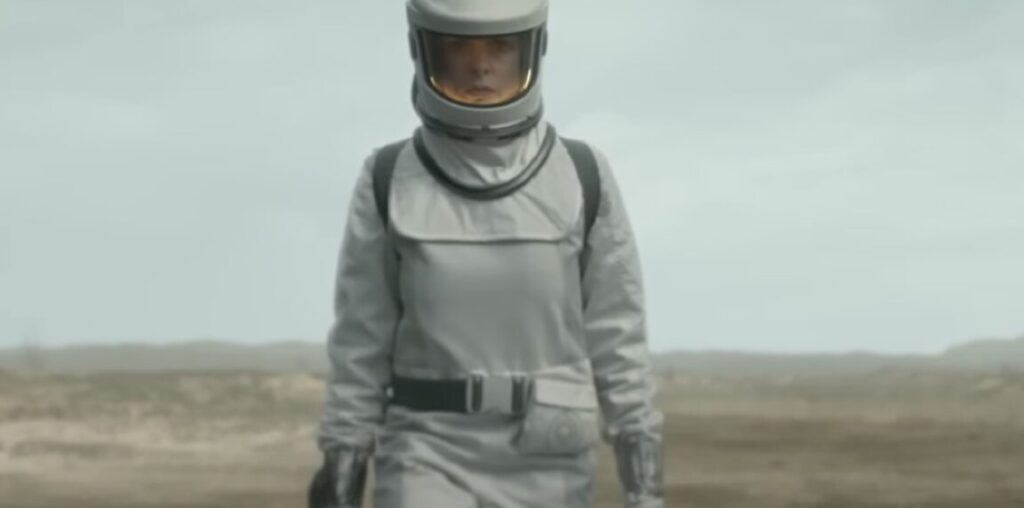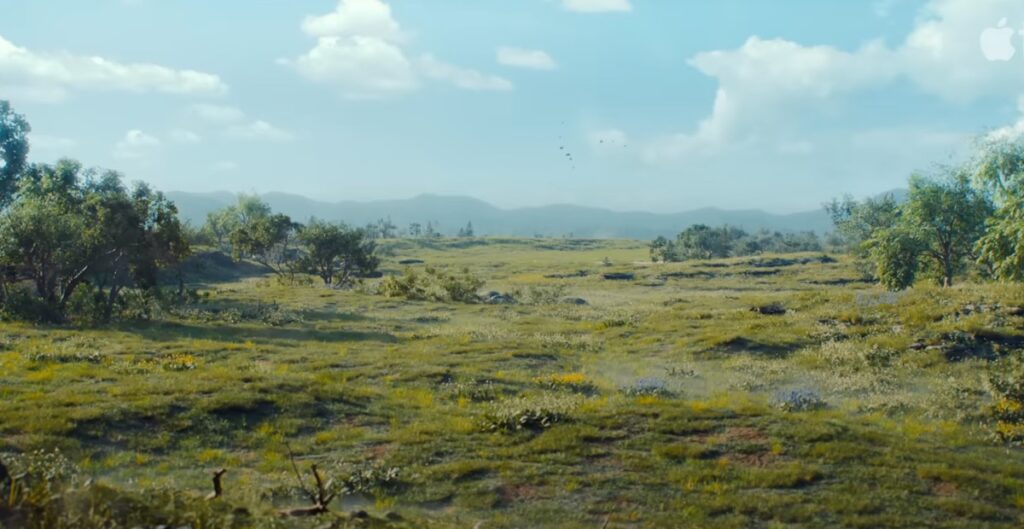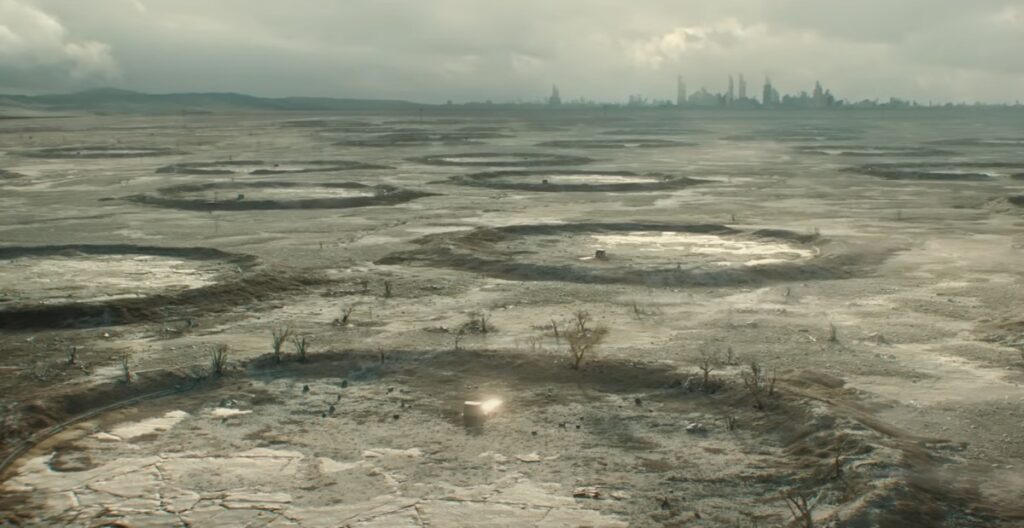I also changed the lenses because I wanted to keep the retro feel, the dystopian future, but retro feel. I chose slightly different lenses to give me a wider feel of view. I talked to my director, Michael Dinner, and we talked about how at times, as brilliant as season one was, it was a bit theatrical, a bit presentational. Here’s the silo, here’s the silo, here’s the silo…., So what you want to do is stop worrying about the silo. It is incredible and it’s in the back of every shot. We wanted to make it more visceral. There was going to be a lot more action. The start of episode one is a full-blown battle. Apple released the first five minutes on Apple. It actually stops at a very critical point, but you can see that it’s the previous world of the other Silo 17.
We still wanted to see the scope and the scale. As a cinematographer, you’ve got to get your head around something that’s very unusual: the Silo is vertical. When we shoot stuff, we go outside, everything’s horizontal. So as a cinematographer, you think horizontally, you frame the skyline, you frame the buildings. But in the silo, it’s all up there and it’s all down there, but it doesn’t exist. A bit of the set exists, but you have to go, oh, okay, what can I see if I point the camera up here, what will VFX brilliantly give me? What can I see down there? So that was another big discussion.
The initial view of what’s outside the silo
YouTube/Apple TV+
The initial view of what’s outside the silo
YouTube/Apple TV+
What’s actually outside the silo
YouTube/Apple TV+
Ars Technica: When you talk about wanting to make it more visceral, what does that mean specifically in a cinematography context?
Baz Irvine: It’s just such a lovely word. Season one had an almost European aesthetic. It was a lot of very beautiful, slow developing shots. Of course it was world building. It was the first time the silo was on the screen. So as a filmmaker, you have a certain responsibility to give the audience a sense of where you are. Season two, we know where we are. Well, we don’t with the other silo, but we discover it. This role for me meant not being head of the action. So with Juliet, Rebecca Ferguson’s character, we discover what she sees with her, rather than showing it ahead of time.We’re trying to be a point of view, almost hand-held. When she’s running, we’re running with her. When she’s trying to smash her helmet, we are very much with her.



